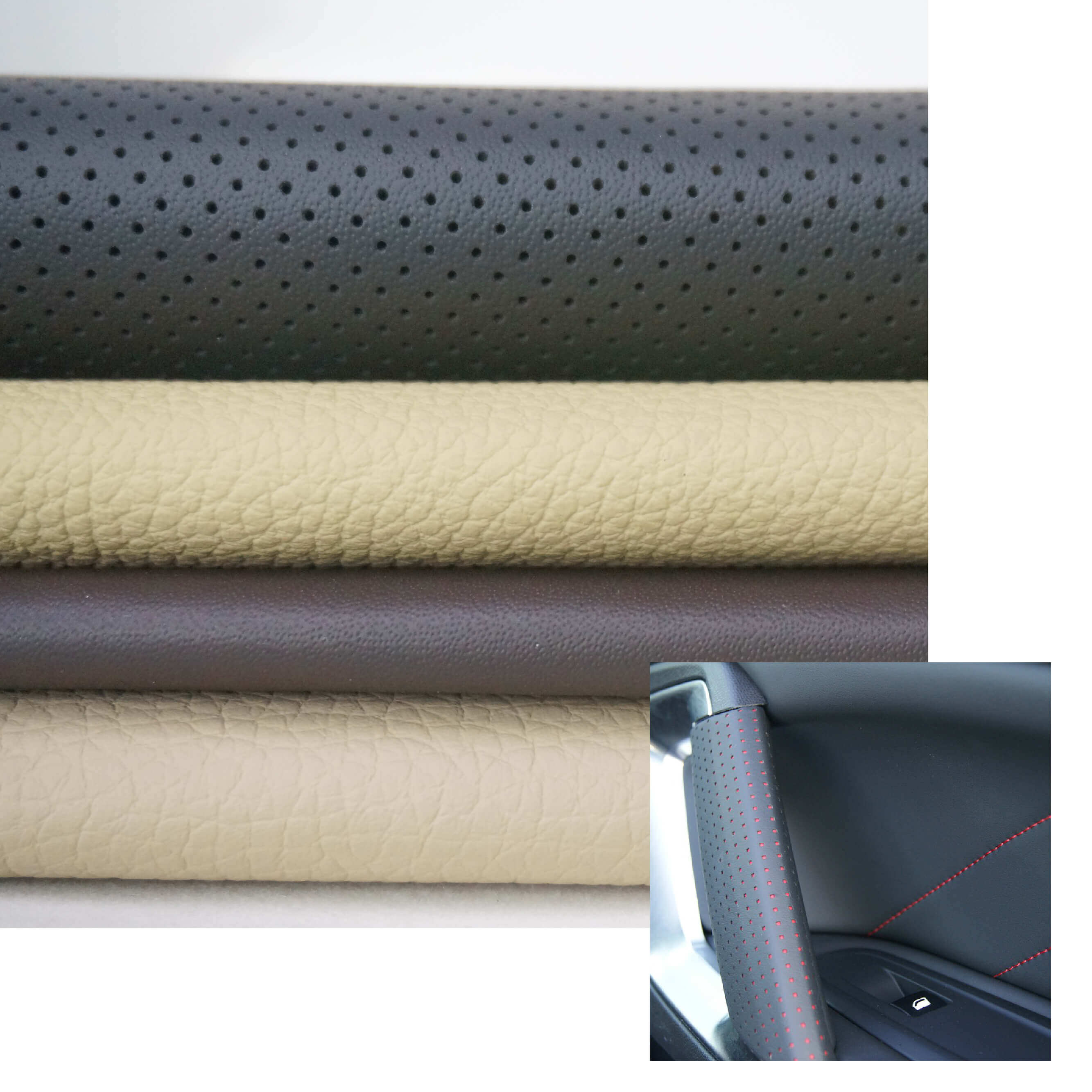Email format error
Email cannot be empty
Email already exists
6-20 characters(letters plus numbers only)
The password is inconsistent
Email format error
Email cannot be empty
Email does not exist
6-20 characters(letters plus numbers only)
The password is inconsistent

News

Unraveling the Mystique: The Difference Between PU and Faux Leather – A Stylish Guide
In the vast world of fashion and design, materials play a pivotal role in shaping our aesthetic choices and defining the durability of our wardrobe. Two materials that have often been mistaken for each other or used interchangeably in conversations are PU (Polyurethane) and Faux Leather. While they might seem like twins at first glance, there's a subtle yet significant difference between them that can impact everything from their look, feel, to their environmental footprint. Today, let's dive deep into the world of these two synthetic wonders and unravel the mystery surrounding their differences.
Introduction: The Rise of Synthetic Alternatives
In recent years, there's been a growing trend towards sustainable and eco-friendly fashion choices. This shift has led to a renewed interest in synthetic materials like PU and Faux Leather, which offer a more affordable and often cruelty-free alternative to genuine leather. Both PU and Faux Leather have become staples in fashion circles, adorning everything from high-end handbags to casual sneakers. However, understanding the nuances between them is crucial for making informed decisions as a conscious consumer.
PU Leather: The Versatile Synthetic
PU, short for Polyurethane, is a type of synthetic leather that's made by applying a layer of polyurethane over a base material, usually a fabric or a synthetic fiber mesh. This process creates a material that closely mimics the look and feel of genuine leather, but with a few key distinctions.
Durability: PU leather is known for its durability, thanks to the strength of the polyurethane coating. It can withstand wear and tear relatively well, making it a popular choice for products that need to withstand regular use, such as upholstery, car interiors, and some fashion accessories. However, its lifespan ultimately depends on the quality of the base material and the thickness of the PU coating.
Appearance & Texture: PU leather can be manufactured to mimic a wide range of leather textures, from smooth and shiny to distressed and vintage-looking. The level of realism can vary greatly, with some high-end PU products achieving an almost indistinguishable appearance from genuine leather.
Environmental Impact: While PU leather is a synthetic material, it often has a lower environmental impact than traditional leather production, which can involve heavy use of chemicals and contribute to greenhouse gas emissions. However, the production of PU also involves chemicals, so it's essential to choose brands that prioritize eco-friendly practices.
Faux Leather: The Broad Umbrella Term
Faux Leather, on the other hand, is a more generic term used to describe any material that imitates the appearance of leather but is not made from animal skin. This umbrella term encompasses a wide range of materials, including PU leather, PVC (Polyvinyl Chloride), microfiber, and even vegan leather made from plant-based materials like pineapple leaf fiber or mushroom root.
Variety & Versatility: The breadth of materials under the Faux Leather umbrella means that there's a vast array of options available, each with its unique properties. Some faux leathers are softer and more pliable, while others offer exceptional durability. This variety allows designers to create products that cater to diverse needs and preferences.
Sustainability: Many faux leather materials, particularly those made from recycled or plant-based sources, are marketed as more sustainable alternatives to traditional leather. These materials can significantly reduce the environmental footprint of fashion products, making them a popular choice among eco-conscious consumers.
The Difference: A Closer Look
At the core, the primary distinction between PU leather and Faux Leather lies in their specific composition and categorization. PU leather is a specific type of synthetic material that belongs to the broader Faux Leather family. However, when discussing their differences in practical terms, it's important to note:
- Composition: PU leather is specifically made from polyurethane, whereas Faux Leather can encompass a wide range of materials, some of which may not involve polyurethane at all.
- Durability: Generally speaking, PU leather tends to be more durable than some other faux leather materials, especially those made from thinner or less robust synthetic fibers.
- Appearance: Both can mimic the look of genuine leather, but the level of realism and the specific texture achieved can vary greatly depending on the material and manufacturing process.
- Environmental Considerations: While both are considered more eco-friendly than traditional leather, the specific environmental impact of each material depends on its production methods and the materials used.
Conclusion: Making Informed Choices
In the end, the choice between PU leather and Faux Leather (or any other synthetic material) comes down to personal preference, budget, and sustainability concerns. Understanding the differences between these materials can help you make more informed decisions when shopping for fashion and home decor items. Whether you're looking for a stylish handbag, a durable sofa, or any other product that utilizes these materials, here are some key points to consider before making your purchase:
Personal Preference: Consider how you feel about the look and feel of each material. PU leather often mimics the appearance of genuine leather quite convincingly, offering a sleek and modern aesthetic. Faux leather, on the other hand, can vary widely in appearance and texture, from soft and supple to more plastic-like. Choose the one that aligns best with your personal style and the aesthetic you're aiming for.
Durability: Both PU leather and Faux Leather can be quite durable, but their longevity may depend on factors like manufacturing quality and how well they're cared for. High-quality PU leather can withstand daily wear and tear better than some lower-grade Faux Leather options. However, it's essential to read reviews and do your research to find products that are known for their durability.
Budget: PU leather and Faux Leather are generally more affordable than genuine leather, making them popular choices for those on a budget. However, prices can vary significantly depending on the quality and brand. Compare prices and consider your overall spending plan to find the best value for your money.
Sustainability: If sustainability is a concern for you, consider the environmental impact of the materials. While both PU leather and Faux Leather are synthetic alternatives to genuine leather, their production processes can still have an environmental footprint. Look for products made from recycled materials or those that have been certified as eco-friendly.
Care and Maintenance: Different materials require different levels of care and maintenance. Some PU leather and Faux Leather products may be easier to clean and maintain than genuine leather, while others may require specific cleaning products or techniques. Research the care instructions for the products you're considering to ensure you're prepared to keep them looking their best.
In conclusion, choosing between PU leather and Faux Leather (or any other synthetic material) is a personal decision that should take into account your preferences, budget, and sustainability concerns. By understanding the differences between these materials and considering the factors outlined above, you can make more informed choices when shopping for fashion and home decor items. Remember, the right material can enhance the look and feel of your purchases, so take the time to find the one that's perfect for you.

